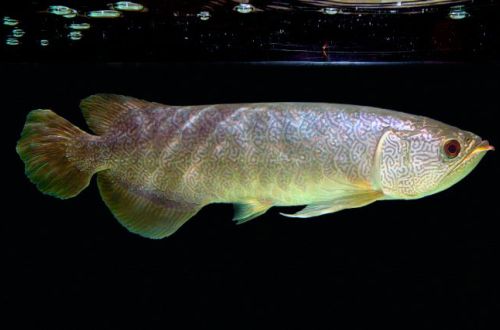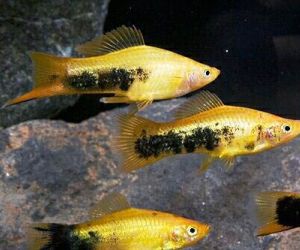
Arawana Myanmar
Arawana of Myanmar, scientific name Scleropages inscriptus, belongs to the Osteoglossidae family. It is considered one of the most expensive types of fish. The cost of some individuals can be tens of thousands of dollars. It is popular mainly in Asian countries.

Contents
Habitat
Comes from Southeast Asia. The exact habitat is not known. Wild specimens were collected from Myanmar in its southern administrative region of Taninthai. Probably, the fish is also common in the neighboring countries of Thailand and Malaysia. Inhabits rivers and floodplain lakes. Prefers upper layers of water.
Description
Adult individuals reach a length of up to 60 cm. The fish has a powerful elongated body. The dorsal and anal fins are shifted back closer to the tail, which makes it possible to quickly accelerate in the process of hunting. If necessary, the fish can jump out of the water, as do its Aravan relatives from South America. The color is light brown with a golden sheen.
Food
A predator that feeds on small fish, insects, and other invertebrates near the surface. As mentioned above, Arawana Myanmar is able to jump out of the water to grab prey that is on a low-hanging branch. In the aquarium, they feed similar meat fresh or frozen products, for example, fish and shellfish meat, earthworms, shrimp.
Maintenance and care, arrangement of the aquarium
Such fish do not belong to the category of amateur aquarists, since their maintenance requires a lot of experience and not a small investment of time and money. Usually they are presented in public aquariums, for example, in shopping centers, or in private homes of wealthy people. In both cases, this fish is cared for by hotel specialists, therefore, within the framework of this article, there is no need to describe in detail the features of keeping and recommendations for the aquarium.
Behavior and Compatibility
Predatory, but not aggressive fish. Compatible with other species large enough to fit in her mouth. Leads a solitary lifestyle, however, is neutral towards relatives, can be in a group.





